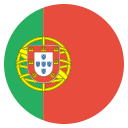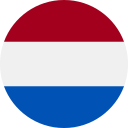Contrast
01
对比
differences in color or in brightness and darkness that an artist uses in a painting or photograph to create a special effect

例子
The painting used a stark contrast between light and shadow to create a dramatic effect.
这幅画使用了光与影之间的鲜明对比来创造戏剧性的效果。
The landscape painting captured the contrast between the lush green fields and the stormy sky.
风景画捕捉到了郁郁葱葱的绿色田野与暴风雨天空之间的对比。
02
对比
the noticeable difference or opposition between two or more things that are compared
例子
The bright colors of the flowers stood in stark contrast to the dull, gray background.
花朵的鲜艳色彩与暗淡、灰色的背景形成了鲜明的对比。
There was a noticeable contrast between his cheerful demeanor and her somber mood.
他欢快的举止和她忧郁的情绪之间有着明显的对比。
03
对比度
the difference in dark and light colors on a television screen
例子
Adjusting the contrast on the TV improved the picture quality.
调整电视的对比度提高了画面质量。
The high contrast made the colors on the screen more vibrant.
高对比度使屏幕上的颜色更加鲜艳。
04
a conceptual distinction between ideas or categories
例子
The philosopher discussed the contrast between reality and illusion.
There is a contrast in theory and practice.
05
the action of distinguishing differences through comparison
例子
The teacher asked the students to make a contrast between the two poems.
Analysts performed a contrast of the old and new policies.
to contrast
01
对比
to compare two people or things so that their differences are noticeable
Transitive: to contrast two people or things

例子
She is currently contrasting the different approaches to problem-solving.
她目前正在对比不同的解决问题的方法。
Can you please contrast the main characters in the novel?
你能对比一下小说中的主要人物吗?
02
对比, 形成对照
to differ in a noticeable or obvious way
Intransitive: to contrast with sth
例子
The bright colors of the painting contrast sharply with the dark frame.
画作的明亮色彩与深色画框形成鲜明对比。
Her cheerful personality contrasts with his serious demeanor.
她开朗的性格与他严肃的举止形成对比。




























